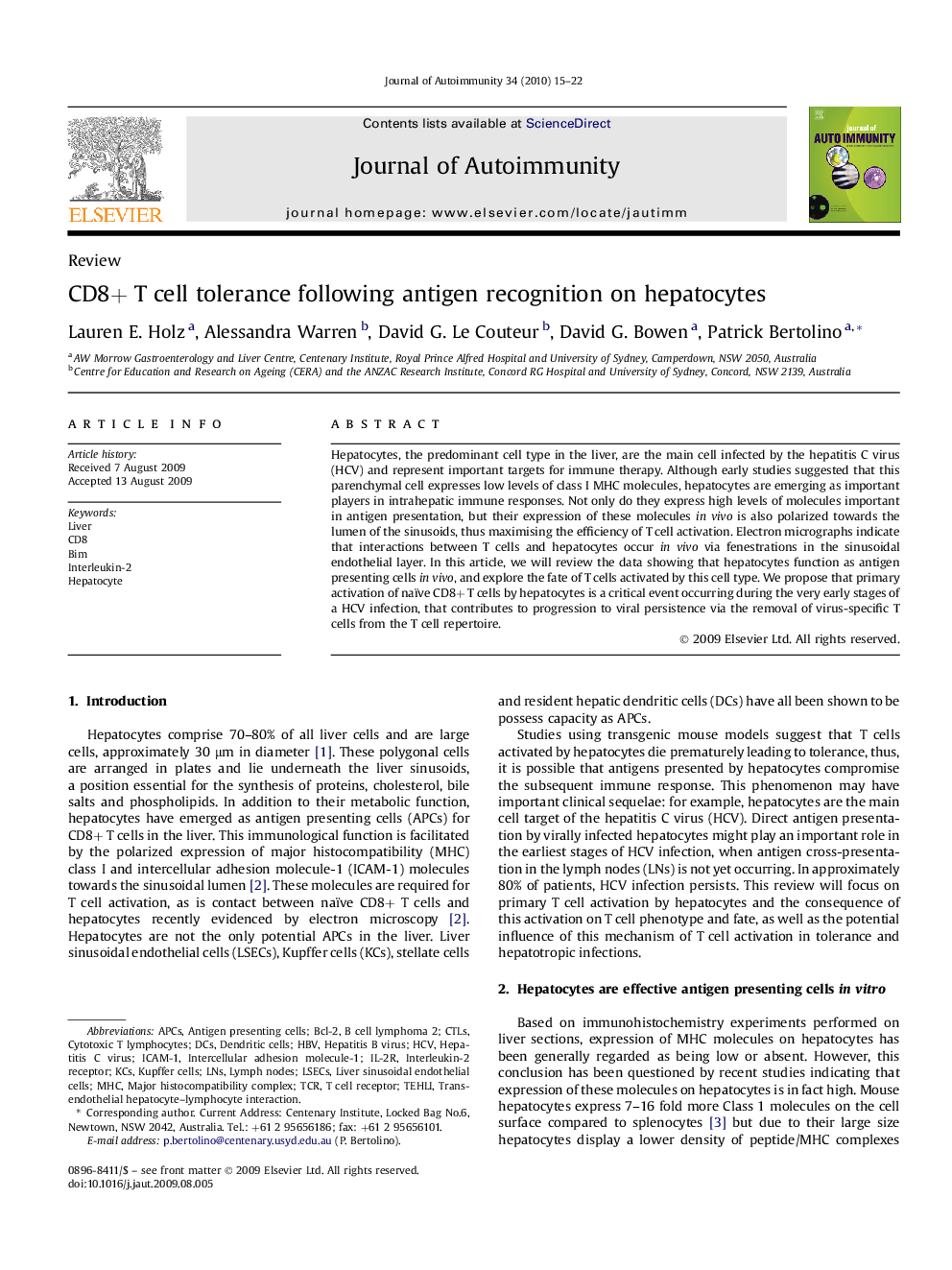| Article ID | Journal | Published Year | Pages | File Type |
|---|---|---|---|---|
| 3368031 | Journal of Autoimmunity | 2010 | 8 Pages |
Hepatocytes, the predominant cell type in the liver, are the main cell infected by the hepatitis C virus (HCV) and represent important targets for immune therapy. Although early studies suggested that this parenchymal cell expresses low levels of class I MHC molecules, hepatocytes are emerging as important players in intrahepatic immune responses. Not only do they express high levels of molecules important in antigen presentation, but their expression of these molecules in vivo is also polarized towards the lumen of the sinusoids, thus maximising the efficiency of T cell activation. Electron micrographs indicate that interactions between T cells and hepatocytes occur in vivo via fenestrations in the sinusoidal endothelial layer. In this article, we will review the data showing that hepatocytes function as antigen presenting cells in vivo, and explore the fate of T cells activated by this cell type. We propose that primary activation of naïve CD8+ T cells by hepatocytes is a critical event occurring during the very early stages of a HCV infection, that contributes to progression to viral persistence via the removal of virus-specific T cells from the T cell repertoire.
